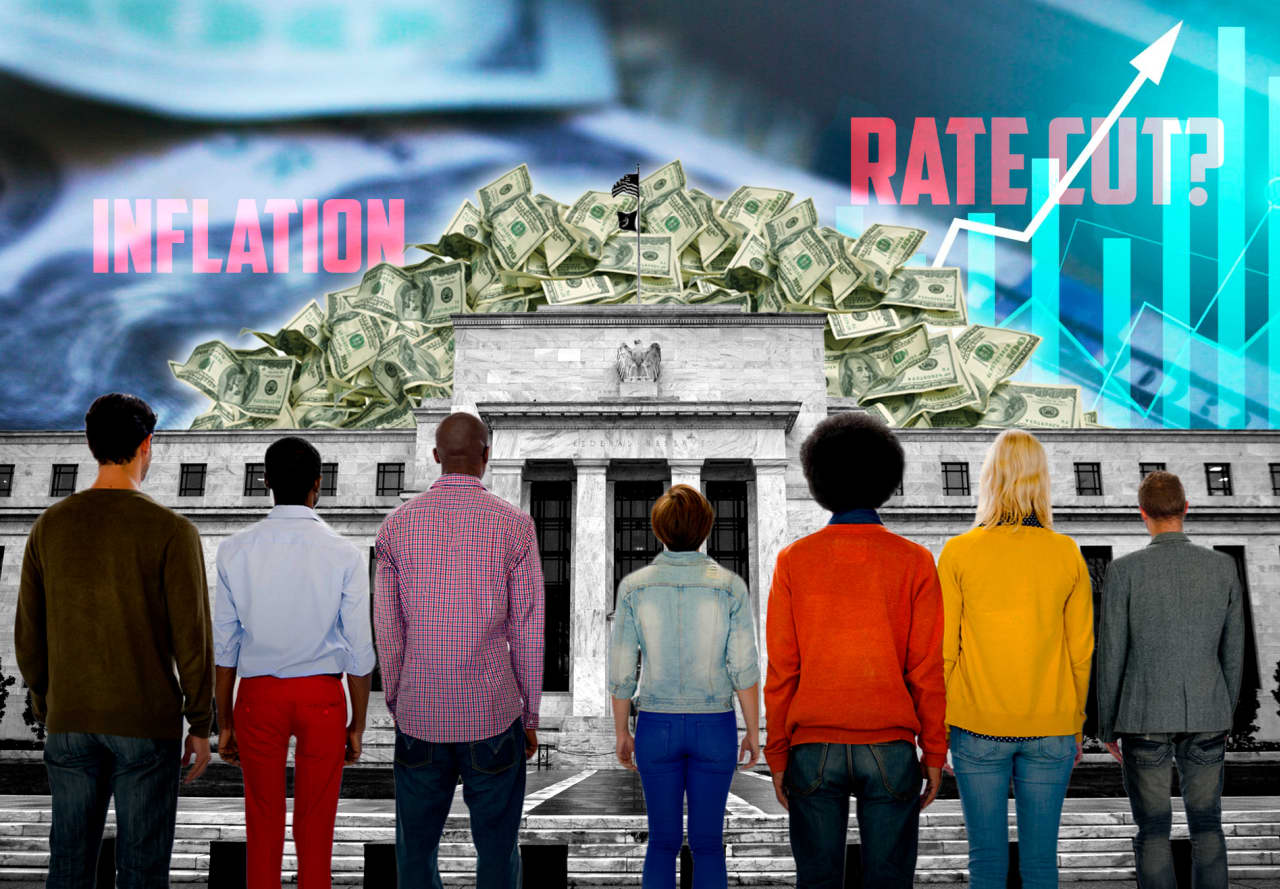The Federal Reserve’s pushback on expectations for interest-rate cuts over the previous 2 weeks has financiers closing enjoying inflation information and stacking more money into money-market funds.
Financiers stowed away a record $6.48 trillion away in U.S. money-market funds through completion of January, with the balance growing as bliss in December over a Fed policy pivot fizzled, according to Crane Data.
Fed Chairman Jerome Powell initially put cold water on aggressive expectations for rate cuts at a late January policy conference by showing a March rate cut wasn’t most likely He followed up days later on with a CBS News “60 Minutes” interview, informing 6.6 million audiences that the reserve bank would tread thoroughly on rate cuts due to the fact that inflation isn’t yet convincingly tamed.
” He actually put a huge damper on it,” stated Deborah Cunningham, primary financial investment officer, international liquidity markets at Federated Hermes, a group that had $560 billion in money-market possessions since Dec. 31. “The marketplace got ahead of itself in November and December.”
Mindful bonds
Earlier optimism about lower rate of interest, possibly as quickly as March, assisted U.S. mutual fund swing to favorable returns in 2023.
Yet, lots of benchmark bond indexes were back at a loss in February, with the 10-year Treasury yield
BX: TMUBMUSD10Y
reaching 4.18% on Monday, the greatest given that mid-December.
” The equity market would not discover, however the bond market is definitely listening to Powell,” stated George Catrambone, head of set earnings at DWS Group, in a phone interview.
” Powell removed the punch bowl in January, however that was required,” he stated. “They do require to defend against a reacceleration of inflation.”
With that background, Catrambone called Tuesday’s set up release of the consumer-price index for January the week’s “centerpiece,” especially after a strong January tasks report and information revealing a the U.S. economy grew 3.3% in the 4th quarter.
A s easonally-adjusted CPI for the 4th quarter can be found in Friday at a 3.3% yearly rate, highlighting the development the Fed has actually made in bringing cost pressures below a more than 9% peak in this cycle. Still, the expense of living stays above the reserve bank’s 2% target.
” I do believe the Fed is pleased with the inflation development so far, however we require to see more,” Catrambone stated. With that background, he stays a supporter of buying the front-end of the Treasury yield curve, especially with rates on 6-month Treasury expenses.
BX: TMUBMUSD06M
above 5% for almost a year.
” While the bar to cut is high, the bar to raise is even greater,” Catrambone stated.
Read: Economic downturn fears vaporize in brand-new projection of leading economic experts
S&P 500’s turning point
Mindful tones in the bond market in current weeks have actually been mainly missing out on from U.S. stocks, with the Dow Jones Industrial Average.
DJIA
and S&P 500 index both starting a record-setting spree to begin 2024, and the Nasdaq Composite Index not far behind.
See likewise: U.S. stocks have actually simply achieved something that hasn’t occurred given that 1972
Adam Hetts, international head of multiasset at Janus Henderson Investors, stated that remaining in money can be appealing, specifically in 2015 when economic downturn issues had actually been at the leading edge for so long.
” Financiers are now anticipating a Goldilocks situation,” Hetts stated, a scenario where the economy keeps growing however inflation continues to fall. Along the method, they likely require to swallow “cold and hot financial news.”
” Financiers too concentrated on the economic downturn crystal ball entered into money, lured by high rates,” Hetts stated. However by preventing stocks, financiers would have lost out on the S&P 500’s approximately 23% advance in the previous 12 months, according to FactSet information.
” Money is king for short-term liquidity requirements, however being obese money can be poisonous for long-lasting monetary preparation,” Hetts stated.
To that end, he prefers a more conventional 60:40 allowance to stocks and bonds, specifically offered the greater yields offered in intermediate-duration set earnings to balance out any chaos that might appear in equities that look “priced to excellence.”
The S&P 500.
SPX
was greater Monday after closing Friday above the 5,000 mark for the very first time ever, while acquiring 1.4% for the week, according to Dow Jones Market Data.
See: S&P 500 reaches 5,000 for very first time. Here’s what it implies for the marketplace.
The Dow and Nasdaq Composite likewise were greater Monday, after advancing less than 0.1% and 2.3%, respectively, for the week, according to Dow Jones Market Data.
On the other hand, money parked in money-market funds has actually been making about 5% for lots of months, assisted along by the yield on the 1-month Treasury expense.
BX: TMUBMUSD01M
and 3-month.
BX: TMUBMUSD03M
around 5.38% since Friday, according to FactSet.
With the brand-new “real estate check” in markets around rate-cut expectations this year, Cunningham at Federated Hermes stated getting to a $7 trillion balance for money-market funds isn’t difficult to envision.
